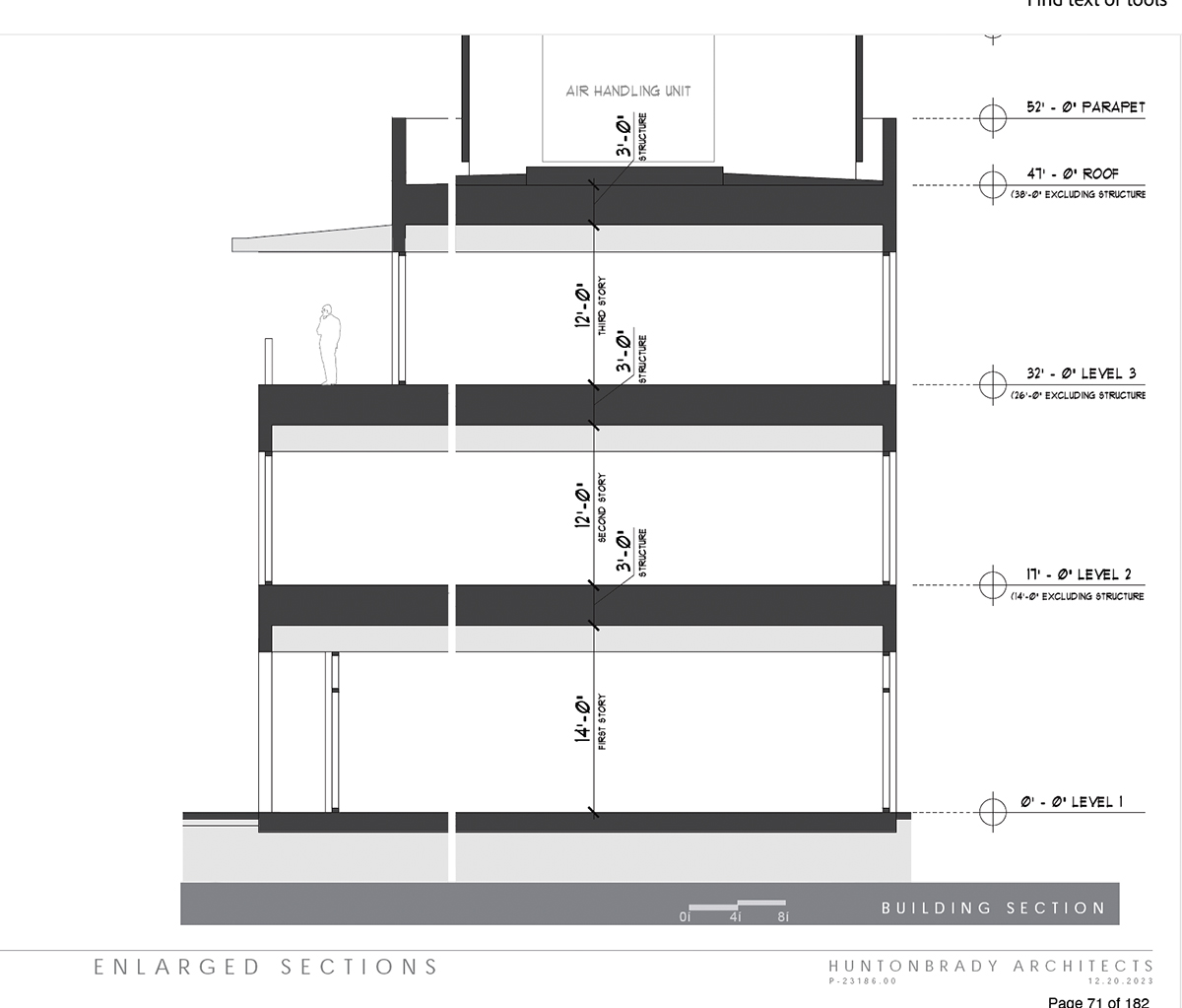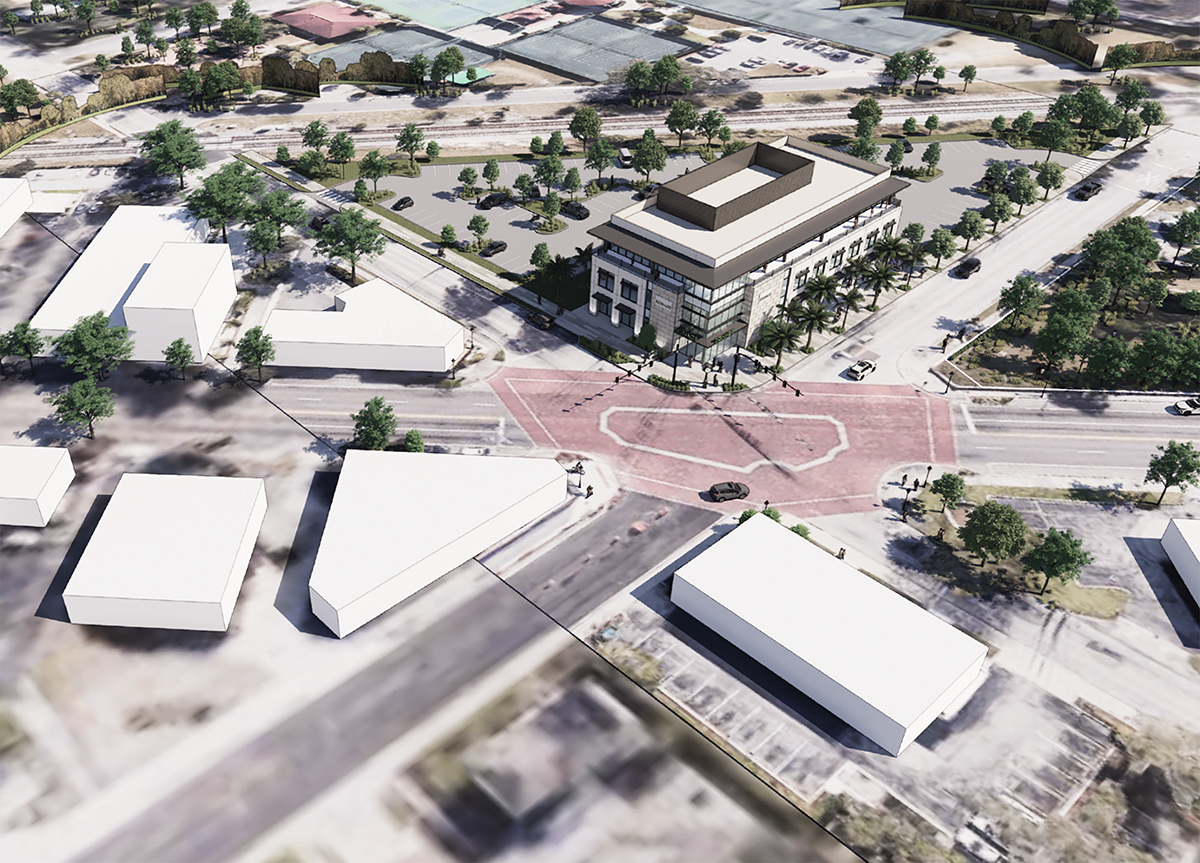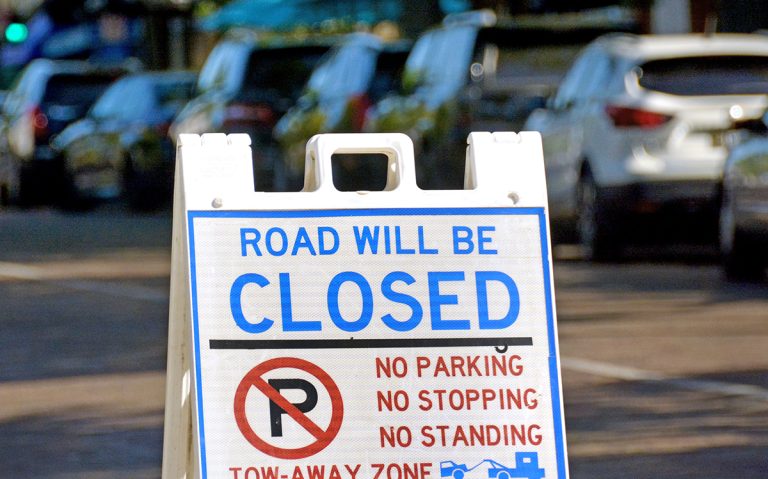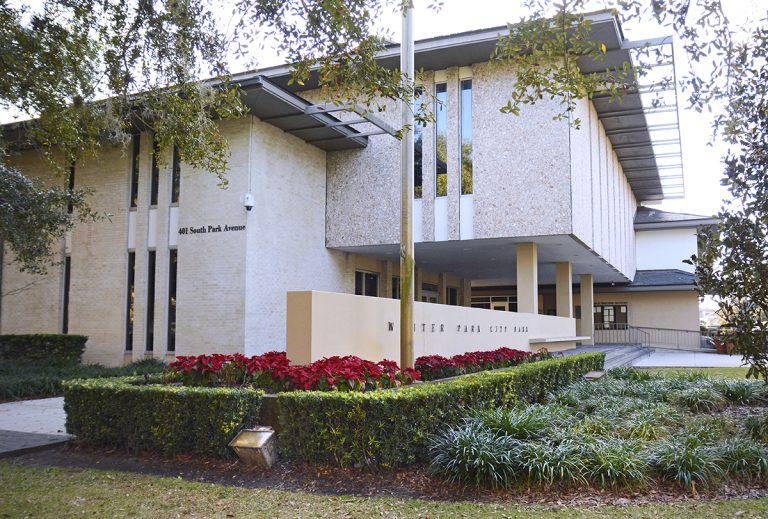McCraney Property Company’s proposal for a three-story, 29,500-square-foot office building at 1100 N. Orange Ave. was tabled during its first reading at the Feb. 14 City Commission meeting despite previous concessions. Nearly four hours of discussions included feedback from 23 audience members, and revealed confusion over the interpretations of the Orange Avenue Overlay (OAO) District codes.
The OAO District codes and requirements are the result of two years of discussions over the future look and appeal of the N. Orange Avenue gateway into downtown Winter Park. The McCraney office plan, which is the first new construction proposal in the District, received unanimous approval from the OAO Architectural Review Board during its Jan. 17 meeting. A deed restriction for an 11,035 square-foot green space at the property’s southern end and a required easement for a proposed roundabout at the intersection of Denning Drive and Minnesota Avenue prompted site plan revisions that gained a unanimous vote for conditional use approval at the Feb. 6 Planning and Zoning Board meeting. However, some members of City Commission took issue with requested waivers to OAO building codes and a mixed-use requirement intended to create foot traffic and broaden the business landscape.
Commissioner Todd Weaver noted a five-foot infringement on the OAO building height restriction that resulted from confusion over floor-to-floor measurement requirements. He also took issue with a request for a 12-foot screen wall, meant to hide roof-mounted mechanical equipment from view at the right-of-way. Representatives from HuntonBrady Architects said the screen height could be adjusted, and was an estimation to allow for a four-foot space between the roof and the mechanical equipment.

Despite an OAO allowance for a three-story building on the property, located by the Seven Oaks Park site, Commissioner Marty Sullivan felt that McCraney’s design should be in keeping with that of the surrounding buildings, which average two stories in height. He also noted that the code did not allow for a variance on the mixed-use space requirement of 25% of the building’s gross floor area. “That was very intentional to provide what we felt would be the kind of vibrant Orange Avenue for the future,” he said.
“I think that it is a very good-looking building, but I don’t believe it belongs in that location,” said Vice Mayor Sheila DeCiccio, adding that the design is out of character for the neighborhood, and for an area that borders on residential properties.
Mayor Phil Anderson and Commissioner Kris Cruzada each expressed approval of the building design and its low-density approach. Anderson commented on the additional traffic and parking requirements that accompany mixed-use properties and Cruzada stated that the architecture would add to the dynamic of the city. “I like it; I like that it’s a new building in an area that hasn’t seen a new building in decades,” Cruzada said.
“I find the architecture modern and different but fitting in a corridor that is evolving,” Anderson said. “There will be a pace of redevelopment in this corridor that is going to happen.”

Public comments lasted almost an hour. Many of the 17 voices in favor of the proposal were business owners hoping for additional Class A office space in Winter Park. “I would love to get out of Orlando and move here, there’s just not enough office space,” said Winter Park resident and FBC Mortgage co-CEO Joe Nunziata. Kenneth Brown, who owns a home near the property, felt the building design was in keeping with the residential area. “Every home on our street has modern architecture, this building perfectly mirrors the homes closest to it,” he said.
Of the six community voices on the other side of the debate, Carolyn Moor and Bonnie Hanson expressed concern at the possibility of the project adding traffic to the residential area. Melrose Avenue resident Ann Mooney was in favor of developing the property but felt the building should fit the neighborhood. “I don’t think it fits now, but I think it could,” she said.
Attorney Becky Wilson, speaking on behalf of McCraney Property Company, addressed areas of confusion in the OAO code that included the subarea allowance for a three-story structure and the Architectural Review Board’s acceptance of the building height. “We didn’t come in here believing we were asking for a waiver or variance,” she said, but noted the applicant’s willingness to find a solution to the five-foot overage and the 12-foot screen wall request.
Regarding the mixed-use requirement, Wilson argued that the allowance of the 25% mixed-use variance was permissible under the code, which only denied variances in the permitted use of a building. Planning and Zoning Director Allison McGillis stated that city staff and city attorney Dan Langley had previously agreed with that interpretation. Sullivan and Mayor Anderson requested further examination of the code to clarify any misinterpretations. “It has been two years since I have read the final copy,” Anderson said. “I think that’s a good prompt to go back and remember what it is that we did sign and pass.”
Commissioners agreed to table a vote to the proposal’s second reading to allow time for a review of OAO codes, and to allow the applicant time to respond to requested design changes. Additional conditions that arose during the meeting include the addition of green space next to a proposed bike path along Denning Drive and the removal of parking spaces near a retention pond at the back of the property.
The proposal will be on the agenda of the next City Commission meeting, scheduled for Feb. 28. To access city meeting information, updates, and recordings, visit cityofwinterpark.org/meetings.



